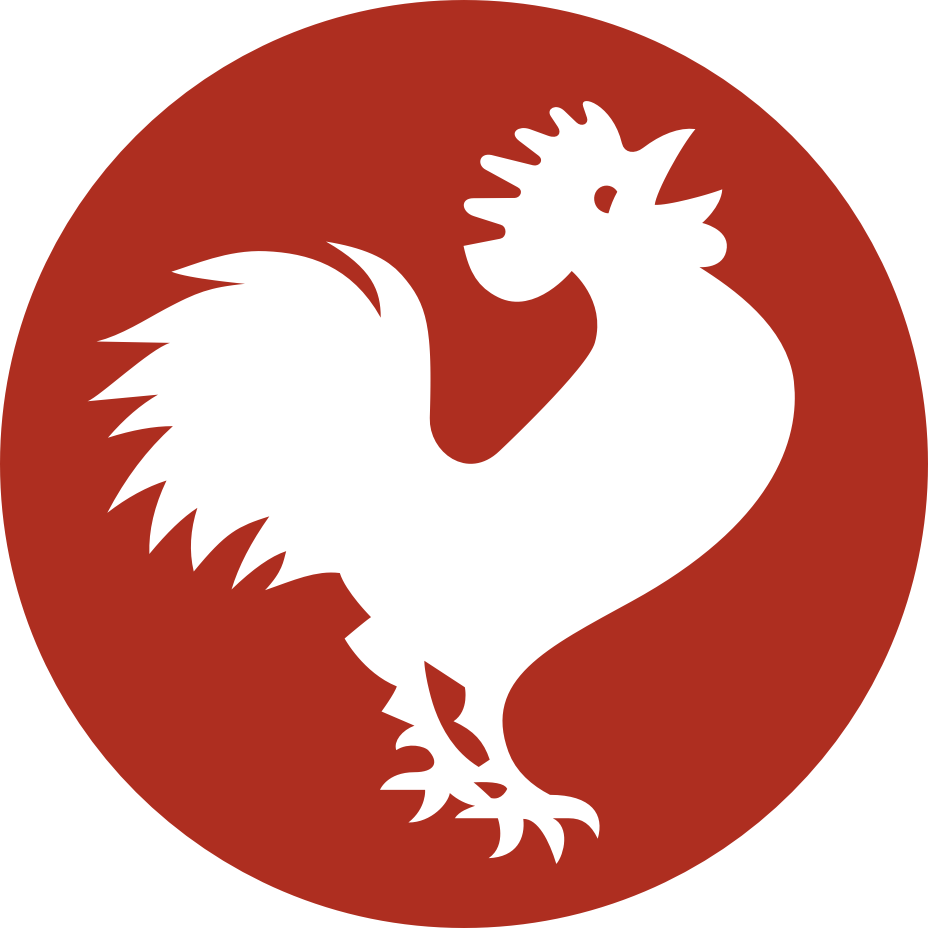Blackouts v. The Bee Sting
The 2024 Tournament of Books, presented by Field Notes, is an annual battle royale among 16 of the best novels of the previous year.
MARCH 27 • ZOMBIE ROUND
Blackouts
v. The Bee Sting
Judged by Kyle Chayka
Kyle Chayka (he/him) is a staff writer at The New Yorker who writes Infinite Scroll, a column about culture on the internet. His second book, Filterworld, on the flattening effects of algorithmic feeds, will be published by Doubleday in January 2024. His first book, The Longing for Less, on the legacy of minimalism in art and life, was published in 2020. Known connections to this year’s contenders: “I’m a friend of Mattie Lubchansky so would not want to be judging their book.” / kylechayka.com
Some books teach you how to read them, but they don’t always teach you quickly, setting up patterns or structures that reveal themselves over many chapters. It’s a kind of hump to get over, like having to watch the first season of a TV show to really get into the second, as all your friends promise is worth doing. I’ve made the same recommendation myself for certain books (cough, Mating). The two books under consideration here, both heavily hyped, approach the problem in different ways.
When I started reading Blackouts I felt completely lost, and not in a bemused, enchanted-forest way. Epigraphs every chapter? Images of seemingly censored texts on the facing pages? A mysterious setting called The Palace and two protagonists, a dying man named Juan Gay and a nameless narrator basically trapped in a room, reminiscing? But as I turned the pages, the fragments of text began to build into a rhythm and the collaged elements cohered, not into a linear narrative but into an aesthetic, a vibe, that swept me up.
Certain images stand out. Perhaps it’s more like an art exhibition than a novel. The narrator recalls finding shelter for a time with a kindly man who takes care of him, to an extent, but constantly brings up his diaper fetish, asking the narrator to wear one. The helplessly erudite Juan references biblical stories and obscure sociologists with equal fluency. “It’s Sodom, darling, worth committing to memory,” he says. The novel’s literary comedy is as pitch black as the title; it is both playful and bleak, like an almost-monochrome Ad Reinhardt painting. Elsewhere, Juan says: “Remember this: not all ambiguities need to be resolved.”
The problem with vibes is that they don’t end.
What I liked about Blackouts, ultimately, was its abstraction, an unfashionable approach these days, when so much narrative has to be spelled out explicitly and many novels read like, and function as, sketches for streaming television miniseries. You could make a show out of Blackouts, but I suspect it would look more like a video-art installation in a museum, one that viewers walk into and out of whenever they’ve had enough.
The problem with vibes is that they don’t end, the mood persists for an enjoyable stretch and then wraps up. The tension, perhaps, is Juan’s looming death, and the process is depicted with extreme care, but it’s more of a hypnotic state than a page-turner. The true resolution might be in the endnotes, Torres’s explanation of how the collage was constructed, the placard on the museum wall.
FROM OUR SPONSOR
Paul Murray’s The Bee Sting, by contrast, is the full prestige miniseries. Family curses, dark deeds, hidden secrets, deceit, car dealerships. I was pulled along by the gradual revelation of the characters’ lives, the anecdotes and backgrounds carefully doled out to keep things interesting. The momentum was always accelerating.
Its prose dips into modernism: I enjoyed how the text took the shape of whichever family member provided the perspective in a given chapter, from the younger child PJ’s text messages and “TOP TEN REASONS CASS IS A BITCH” to the mother Imelda’s headlong, punctuationless rush of language, like this description: “Yes time the future The world to him was a palace of wonders Every nook full up of treasure adventure Just waiting for him to find it.” The variety breaks up the experience of what would otherwise be a ’90s-ish doorstopper.
Page volume doesn’t usually compensate for a lack of connection with a reader, unless it’s romantasy.
But the plot, even if it sets the family dramas against the apocalyptic backdrop of climate change and the uncontrollable forces of the economy, began to feel to me like dominos knocking each other over, one thing after another. Personally, I get tired of stories in which details and dramas pile up and pile up, and the tension ratchets up until something simply has to happen, which of course it eventually does. The Bee Sting has a somewhat ambiguous, and yet utterly dramatic, ending, which after finishing I turned to a Reddit thread to get more insight into the way one reads a TV recap to spot the clues in retrospect. One commenter likened it to the end of The Sopranos.
Maybe I just personally prefer shorter books. Page volume doesn’t usually compensate for a lack of connection with a reader, unless it’s romantasy. I watched The Bee Sting’s characters’ hysterics without engaging much in emotion or empathy, though at many points I urgently wished they would just stop doing what they were doing. Blackouts managed to make me feel more deeply even with its plentiful white space and metatextual approach.
So I chose Blackouts, partly because I hope that more fiction can be like it: risky, experimental without losing a sense of finish, a gesture off into a different direction of literature. I always think about an anecdote about the musique concrète-ish band the Books, that they embraced sampling and soundscapes because they wanted to make albums that couldn’t be soundtracks to films or commercials. Maybe I want novels that can’t be TV shows.
Advancing:
Blackouts
Match Commentary
with Kevin Guilfoile and John Warner
Kevin Guilfoile: This is the second judgment of 2024 that makes a negative reference to a novel having a story that the judge can imagine being made into a streaming series. It’s probably not a coincidence that those two judges knocked out my favorite two books in the tourney.
I like novels where shit happens, John. I like interesting characters in difficult predicaments. I like it when dominos knock each other over; I mean I literally like to watch videos of dominos knocking each other over. Judge Chayka prefers his dominos suspended from the ceiling at varying lengths on fishing wire, or something. That’s fine. In fact, it’s great. We need all kinds of different novels and all kinds of different readers for them.
This one stung though. (Not trying to be funny, but every time I tried to use a different word it was obvious I was deliberately avoiding the bee reference, which was worse.)
John Warner: My liking of novels contains multitudes, but my sentiments are similar about the ultimate judgment in this matchup. I found the momentum that The Bee Sting finds as the individual members of the Barnes family reach their crisis points both tense and believable. Even many months removed from reading it I can feel certain aches of remembrance, like PJ’s schemes to recover enough money to keep from getting the shit kicked out of him, or Cass’s longing for her best friend, or, or, or… I struggled a bit through Imelda’s section, but once I was on the other side, it all seemed to good purpose. I would’ve liked to see The Bee Sting make it to the end so more readers would have a chance to weigh its merits (or demerits).
Kevin: I had the opposite reaction to these books as Judge Chayka did. I didn’t connect emotionally to Blackouts at all. I read it with some admiration, but it was strictly an intellectual exercise. Even though it is probably one fifth the length of The Bee Sting, it probably took me about as long to read. I devoured The Bee Sting in 100- and 200-page chunks. When I wasn’t reading it, I was thinking about getting back to it. It’s the best kind of feeling you can get from a novel.
John: What we’re kicking around here is a great example of one of the main thrusts of Judge Chayka’s recent book, Filterworld: How Algorithms Flattened Culture, in which he makes a convincing case for the veritable necessity of developing one’s own taste in the face of the relentless pressure of an algorithm-mediated society threatening to impose the averaging of the masses on us all. If nothing else, the ToB is a testament to the varieties and differences of taste. I couldn’t disagree more with Judge Chayka about these books, but the nature of that disagreement is also inherently interesting, ultimately more interesting than if we’re all sitting and nodding along with each other about how great everything I enjoy is.
Still, very sad to see The Bee Sting go.
Kevin: Judge Chayka says, “Page volume doesn’t usually compensate for a lack of connection with a reader,” and that is undeniably true. But Dan Kois, who was an opening-round Rooster judge this year, reviewed Murray’s earlier doorstop novel, Skippy Dies, for the New York Times (gift link), and about it he said, “(N)ovels…, if they are as smart and funny and touching as Skippy Dies, can be just as long as they like.”
Also applies to The Bee Sting in my book.
John: Hear! Hear! I’m still connected to the characters in The Bee Sting, and Skippy Dies for that matter.
Kevin: This brings Blackouts just one step away from a Rooster, where it would join Interior Chinatown, The Underground Railroad, and The Good Lord Bird, all dual winners of the National Book Award and the ToB, a feat I call “Le Coq National.” Blackouts will find out who its opponent will be tomorrow when The Librarianist meets the back-from-the-dead The Heaven & Earth Grocery Store.
Staff picks



This year we’re featuring some of our favorite independent businesses—including some owned and operated by friends (and friends of friends)—and today we want to direct you to a longtime friend and collaborator, Anna Sutton, the bagmaker behind AB Sutton.
If you’ve been following the Tournament of Books and The Morning News for a while, you may know Anna’s illustrated portraits and other work with TMN. But you may not know that she’s also an accomplished maker of leather goods, including her stunning new Circle Bag, shown above in Sand. She’s currently updating her site with her latest wares, but in the meantime here’s a product description of the Circle Bag:
This small, lightweight bag has unique seams that create strength through structure. It can be worn long as a crossbody, or with the strap doubled as a shoulder bag. Custom straps are made to order to fit each body/customer perfectly. Closes with a tuck of the top. No hardware.
Other colors: Black, Walnut, Deep Blue, Deep Green, and Cream, with cream linings for all colors (looking inside a bag is like looking into a cloud).
Materials: Sustainable vegetable-tanned, full-grain nappa leather, IVN certified. (It’s gorgeous to the touch, buttery and soft, and smells incredible since it’s not full of chemicals, the colors all come from plants!)
Visit: absutton.com / Instagram

